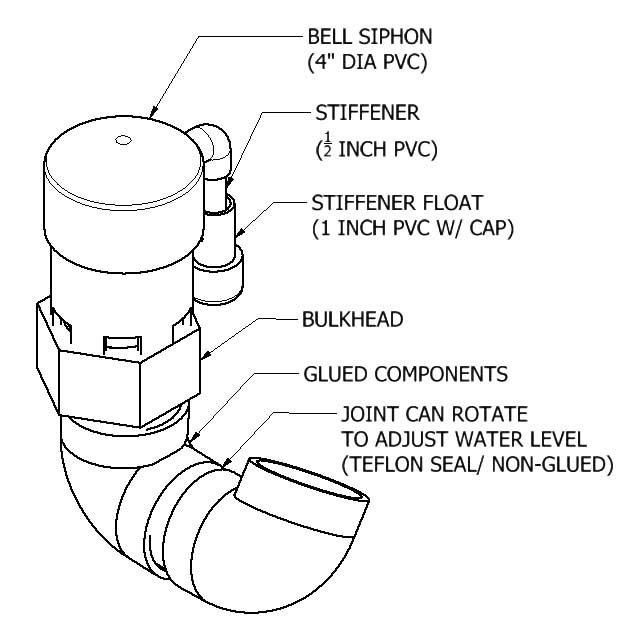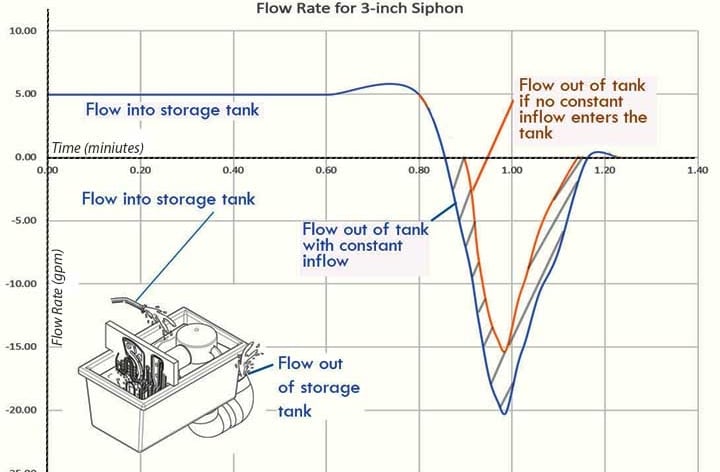When water cycles up and down in a tank, the pressure cycle may be used to pump disinfectant into the water using the dosing unit. To create a consistent up-and-down water cycle, a siphon will work. (Note that a float and flap may also be used if the materials are nonreactive to chemical disinfectant.)
Building a siphon using PVC pipe is actually pretty common. Internet videos show how these can be built for gardening applications. In fact, a published article, Construction of Automatic Bell Siphons in the 2010 edition of the journal Biotechnology is dedicated to how to build such a siphon (Bradley, 2010 .)
Steps on how to build a siphon are listed below.




Bell Siphon and Flow Rates
A bell siphon may be built using 4-inch or 3-inch PVC. If the user can assure a constant flow rate into the device (a flow rate of about 4 gallons per minute) then the size of the PVC will not matter because dosing would be consistent. If, however, one wishes to account for significant variations of flow rate into the unit, then a 4-inch size PVC is advised. The reason for a larger siphon is to minimize dosing variation for possibility of extreme variations in inflow rates. This is more of a safety mechanism for tolerancing.
The Siphon Unit
Quality, not quantity
We have made quality our habit. It’s not something that we just strive for – we live by this principle every day.
